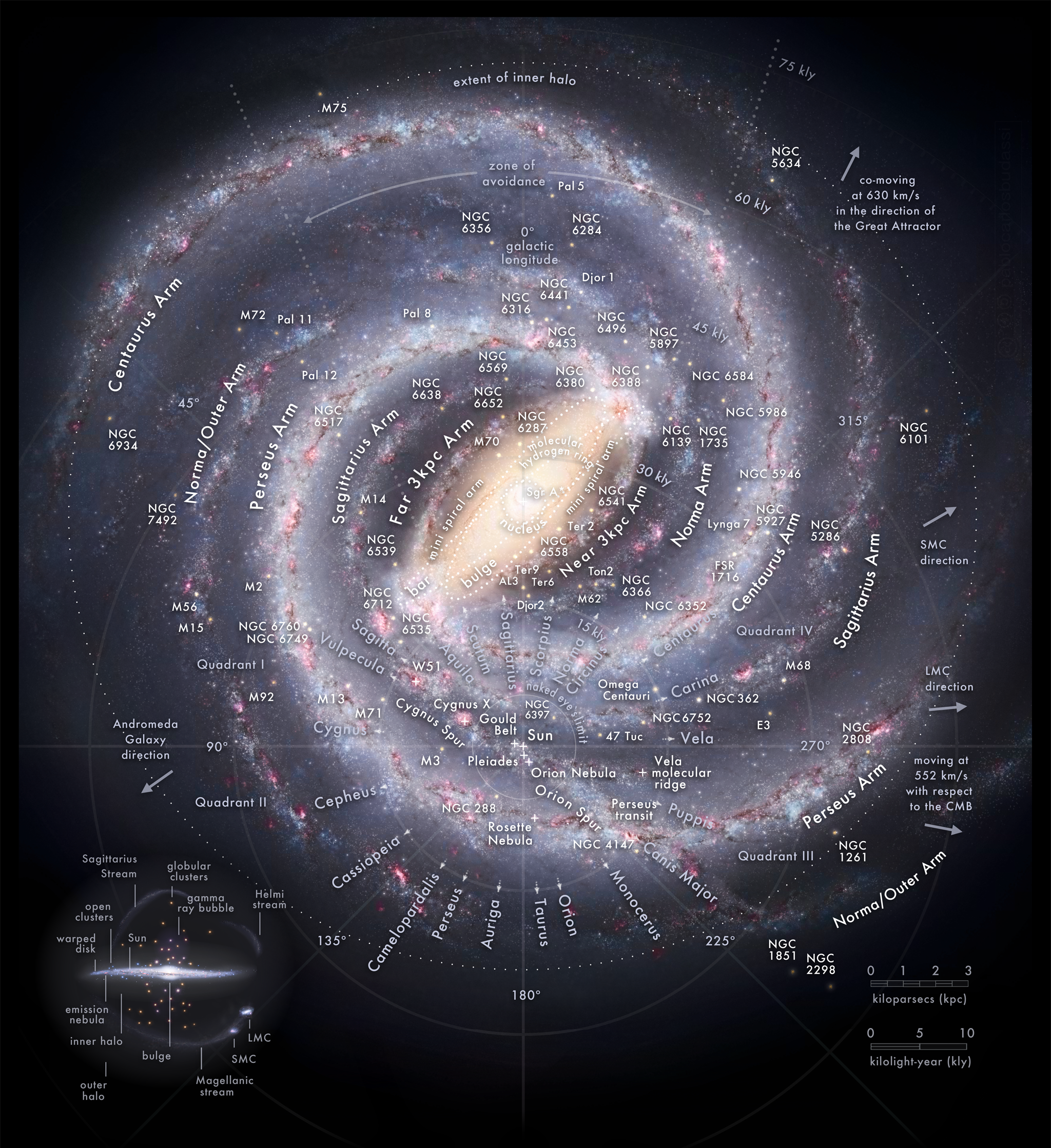Working out the shape of the Milky Way Galaxy from the inside has been quite a challenge, but we’ve slowly found our place, which turns out to be in a minor arm. If you’re looking at the night sky with eyes alone, most of what you can see is part of this same arm.
Douglas Adams described Earth’s location as; “Far out in the uncharted backwaters of the unfashionable end of the western spiral arm of the galaxy…” We can only imagine what disdainful words Adams might have conjured had it been known at the time our location is not even in a major spiral arm, but a relatively puny offshoot?
We will have to wait on making contact with alien species to discover its fashionably or otherwise, but Earthly astronomers don’t usually refer to spiral arms as east or west. Instead, arms are named after constellations in Earth’s skies.
That’s an even more arbitrary designation if you think about it. Future galactic explorers may one day navigate based on weird patterns someone made up from the relative positions of stars that will make no sense to future galactic explorers. Not only do these constellations make no sense at all from a location significantly distant from Earth, since the stars will be arranged differently, even from here they will change with time as stars move or die.
Why Orion?
Nevertheless, constellation-based names at least sound more celestial, and so the two spiral arms that dominate the galaxy are known as the Perseus and Scutum-Centaurus Arms. Two other arms, probably smaller, are called, Sagittarius-Carina and Norma-outer. Although these four hold the bulk of the galaxy’s stars outside the central bulge and bar, in a galaxy this large there are still places for many more stars. This includes the Sun, which is part of a much smaller filament we have named Orion or Orion-Cygnus Arm.
A reconstruction of how the Milky Way is thought to look, with prominent objects and the direction of major constellations marked. The Orion arm is near the bottom.
The Orion Arm takes its name from the famous constellation because prominent objects such as Betelgeuse and the Orion Nebula lie within it. On the other hand, most of the stars we can see in other constellations are in it too. That’s almost inevitable when the arm is 10,000-20,000 light years long, and at least a thousand light years wide. Visible exceptions like the Lagoon Nebula and Eta Carinae both located in the Sagittarius-Carina Arm, are rare.
The Orion Arm is one of many long, thin strands that are relatively densely packed with stars. Recent evidence suggests it’s bigger than we used to think, but it’s still probably smaller than the main arms.
We can see from other spiral galaxies that smaller arms are a common feature – the perfect four-arm spiral is rare, and the Milky Way probably gets closer than most.
Do We Owe Our Existence To The Orion Arm?
An inevitable question as we ponder our place in the universe is whether our position in the galaxy is a coincidence, or if there is something about this location that has allowed our own evolution. Might it only be in backwaters such as minor arms that technological civilizations can appear?
Current answers to such a question can only be speculative. Perhaps major arms are even richer hosts for life: we won’t know until our capacity to study distant planets is far more advanced.
Nevertheless, the Galaxy almost certainly has a habitable zone, just as individual star systems do. Close to the supermassive black hole at the heart of the galaxy, there’s probably too much radiation to allow life, or at least complex multi-cellular life. Moreover, close encounters with other stars would be very frequent, and the disruptions that produces probably prevent civilizations from developing – imagine if dinosaur-killer-sized impacts happened every few million years, resetting the evolutionary clock.
On the other hand, stars in galaxies’ outer reaches or the relative voids between arms are poor in metals. This probably prevents the formation of rocky planets like our own from their protoplanetary disks, presenting another obstacle to life. Arms are almost certainly the place to be.
Other restrictions are more debated. Nevertheless, it’s possible the larger arms are too much like the galactic center for comfort. The main arms have a lot of hot young stars, which means more supernova explosions.
If so, our appearance in the Orion Arm is no coincidence – it might be one of the very few places we could have survived to the point we get to map the galaxy and ask these questions.
Source Link: Where is Our Home In The Galaxy? Meet The Orion Arm
